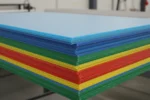The emergence of smart housing technologies is solving some of the most pernicious challenges of daily living and transforming where we live and how we live and helping save money. Residential living is changing because of advancements in comfort, energy, efficiency, and appealing security measures. This article addresses the most important cost benefits of smart housing technologies, paying attention to the benefits of the IoT, home automation, as well as energy-saving measures.
The term “innovative housing” is used to characterize the application of novel design concepts and information technologies, geared explicitly towards improving the comfort, sustainability, and efficiency of a residence. With the greater availability of energy-efficient and environmentally friendly homes, smart technologies is now part of the increasing innovative housing. Smart housing technologies provide innovative investment and fiscal returns as they considerably decrease utility expenses, spare resources, and maximize the property value.
Ordering energy management systems that involve smart lighting and smart thermostats makes it easier to manage energy usage and improves the efficiency of energy consumption. The investment of smart systems has a startlingly positive return as utility bills decrease in the long run, thus improving the financial value of innovative housing.
The Innovations in Residential Living Due to Smart Housing Technologies
Smart housing technologies critical automates, connects, and energy optimizes residential buildings. Through devices such as smart lighting, thermostats, and security cameras, homeowners are able to exercise control and monitor most, if not all, aspects of their residences even when not physically present.
The technologies are a value addition to both the operational expenditure and the capital budget of the users. Smart lighting and thermostats, for instance, are designed to disable when the user is not in the room or when the user is not in the house, thereby eliminating extra costs associated with energy consumption. Additionally, smart lighting and smart thermostats that are not programmed, never disable, which offer a more energy-efficient approach.
IoT in Residential Buildings: Facilitating the Smooth Function of a House
IoT (Internet of Things) is integral in the performance of any smart home as it entails the interconnectivity of systems and devices to improve the systems. Through the use of IoT sensors and devices, Residential buildings are now IoT devices such as home appliances, security systems, and everything under the sphere of environmental controls productivity hub.
As an example, smart home devices such as IoT thermostats and lights can in collaboration ensure that the energy usage is automated, in synergy with the energy use schedule of the homeowner. Such devices are smart as they help in the reduction of energy expenditure, and in the optimization of energy usage. The added value of IoT to homes extends to control over operational routines, which in the end, reduces the manual efforts and improves the living.
Smart Home Automation Systems: Improving Comfort and Efficiency
Home automation systems enable users to automate heating, lighting, and security systems in their houses. Apart from enhancing comfort in the home, these systems save money by reducing the waste of energy.
Smart heating and lighting appliances can change the setting of the home before a user arrives. Also, automation systems can manage household appliances, enabling the appliance to consume less energy, thus improving its lifespan. This results in a cost-efficient home that provides savings over a long time.
Energy Efficient Innovations: Sustainable Solutions for Today’s Homes
The backbone of every smart home lies in its energy efficiency. Homeowners can benefit from innovations like energy-efficient appliances, smart thermostats, and solar panels. These appliances and devices not only save energy but also cost less in the long run.
Energy-efficient homes use less electricity, which means the homeowners can expect lower savings. Although the initial investment of these innovations may seem steep, many governments incentivize homeowners who invest in energy-efficient appliances, thus balancing savings over time. These innovations will ultimately become more affordable, and as they do, they will offer significant savings for homeowners. Leading IoT Devices Modernizing Homes
A variety of IoT devices are enhancing the interaction of homeowners with their living places. Some of the key devices are:
Smart thermostats: Adjust temperatures based on learned user preferences to save energy.
Smart lighting: Turn lights on or off depending on room occupancy.
Smart security systems: Monitor the home in real-time to protect against security threats.
In addition to these benefits, the devices lower costs associated with energy. The integration of devices into the smart home ecosystem can optimize systems to provide great convenience.
Renewable energy, eco-friendly alternatives, and energy-efficient housing are more accessible and efficient integrating modern technology.
Exciting Developments for Eco Friendly Homes
The integration of smart home systems equipped with energy-efficient housing features enables real-time tracking of home energy consumption.
While energy expenses and environmental concerns are on the rise, the adoption of eco-friendly housing features is set to take off. Solar panels, wind turbines, and other renewable energy sources will be set to take off in smart homes, allowing more freedom to homeowners.
Advancements in eco-friendly smart grids will even grant real-time tracking for home energy consumption unlocking the ability to implement better energy optimized spending features on the user interface.
In the coming years, implementation costs will be dropped allowing access for the general populations for the features and homes technologies set to be even more energy efficient.
Security and Privacy in Smart Housing
The concerns of privacy and security have quickly emerged to be of utmost importance in the context of smart housing technologies. Devices that are powered by the Internet of Things (IoT) systems have the capability to access information from multiple sources, which, in turn, increases the chances of privacy breaches and cyber-attacks. The good news, however, is that all of these challenges are now being tackled by improvements in security frameworks and encryption protocols.
Smart cameras, motion sensors, and smart locks all actively enhance security, ensuring that the homeowners get to experience tranquility. Smart devices that are privacy-friendly and maximize security during data collection are becoming more common, enabling an enhanced user experience without the exposure to untoward risks.
Conclusion
The upfront appeal of smart housing technologies is the various economic advantages they unlock. Reducing the consumption of energy and maintenance costs, as well as increasing the levels of comfort and security, all work to enhance the savings that one can achieve, both in the short and long run. The greater the evolution these technologies undergo, the more affordable they get, thus amplifying the economic appeal. These technologies enable homeowners to save and live in an environmentally sustainable manner, making them an ideal investment.















